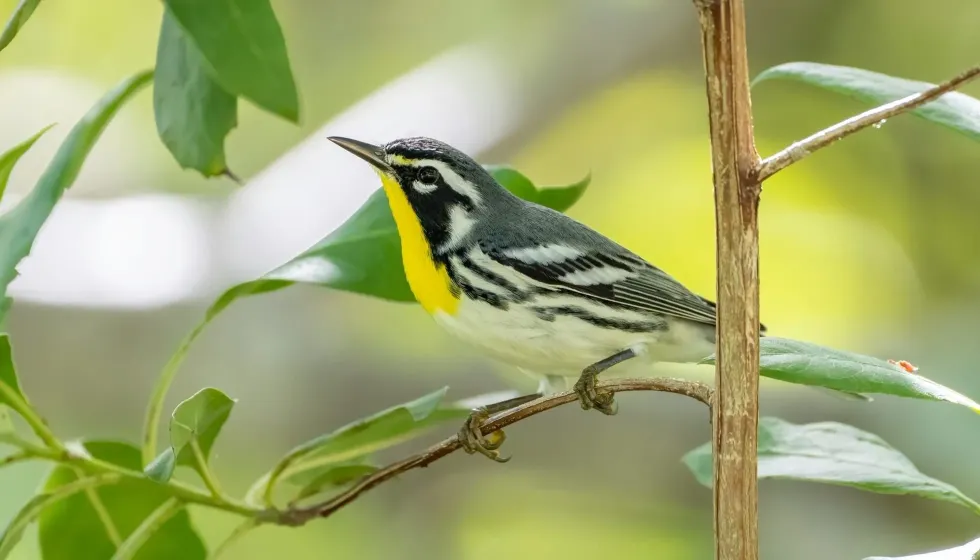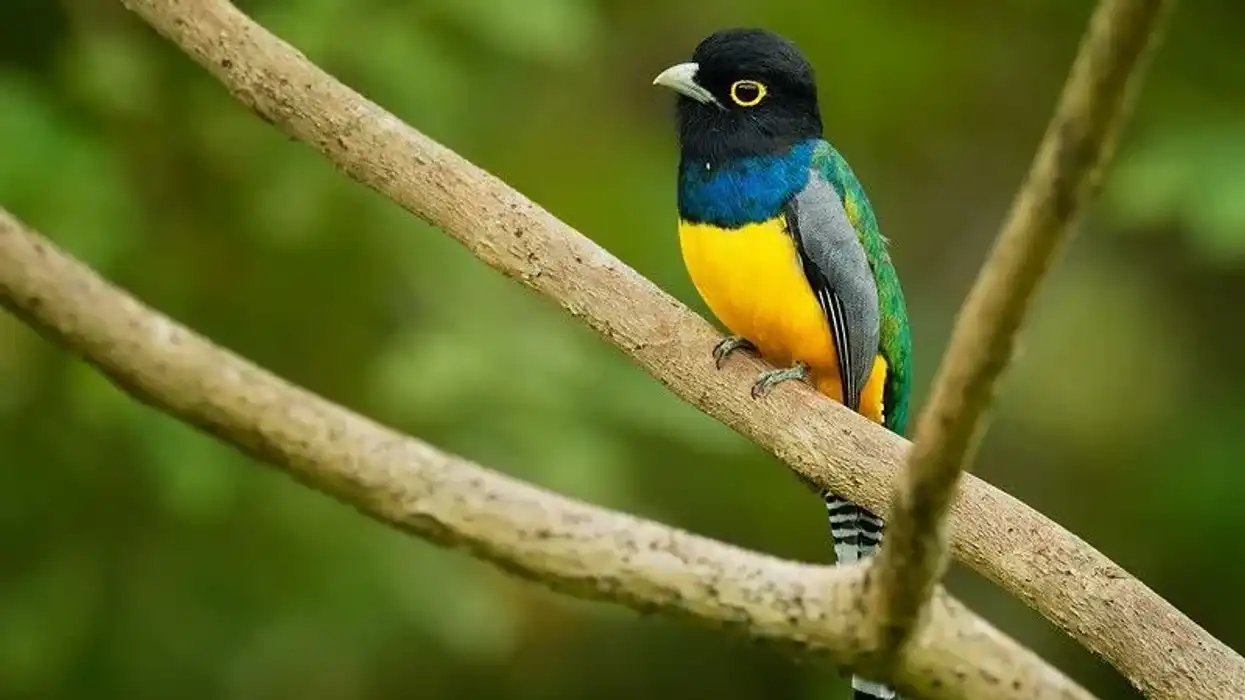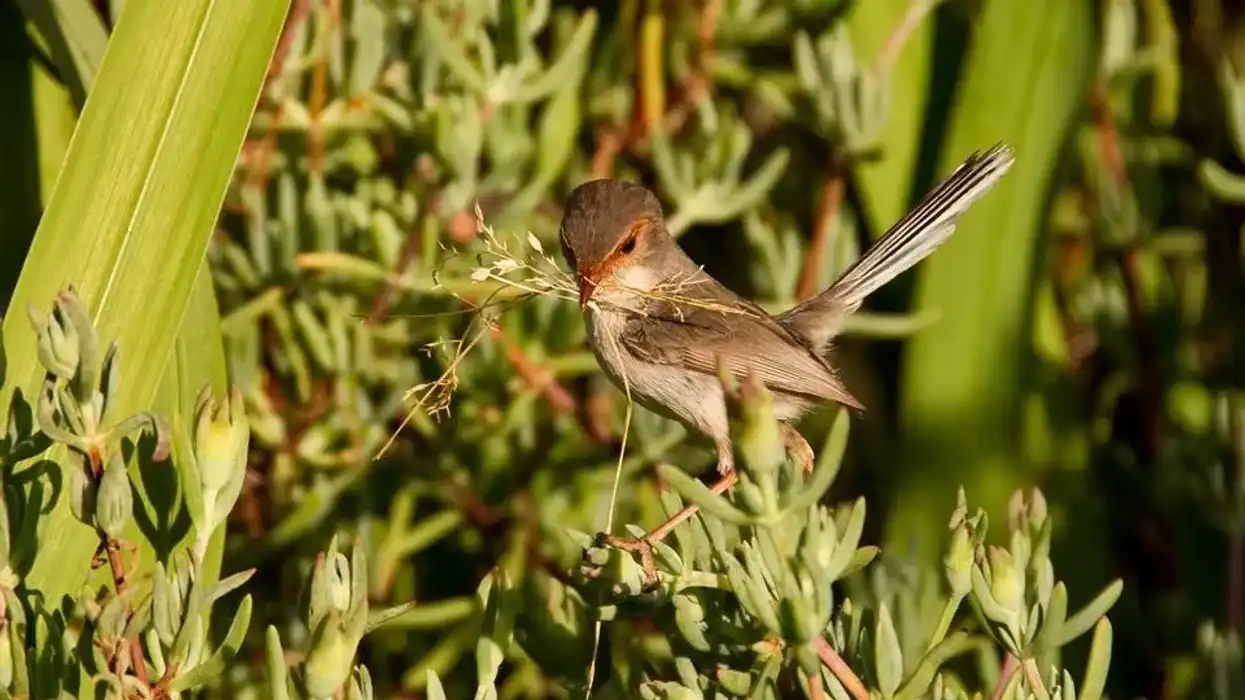Yellow-throated warblers (Setophaga dominica) are tiny North American birds, typically found in branches of trees, they are in both the migratory bird category and the songbird category. These birds belong to the order Passeriformes, the family of New World warblers now known as the Parulidae family.
In the range of southern North America, particularly in Florida, the yellow-throated warbler is considered to be a symbol of fun and joy. These North American birds are a symbol of diversification, expansion, and reminder that the key to survival is confidence.
They indicate that everyone should raise their voice with confidence and speak their mind freely. Many natives of the region have reported that after listening to the song of the yellow-throated warbler, they experience a sense of confidence and feelings of wholeness in their bodies.
Here on our page, we have a lot of interesting facts on the yellow-throated warbler for everyone to enjoy. Let's have a look at these interesting facts, and if you like these, check out aquatic warbler facts and palm warbler facts.
Yellow-Throated Warbler Interesting Facts
What type of animal is a yellow-throated warbler?
The yellow-throated warbler (Setophaga dominica) is a North American bird.
What class of animal does a yellow-throated warbler belong to?
The yellow-throated warbler is a bird that belongs to the class Aves, order Passeriformes, and family Parulidae.
How many yellow-throated warblers are there in the world?
The exact population of the yellow-throated warblers has not yet been estimated. The reason behind this is that these birds are found all over North America, making it difficult to estimate the exact population of this species of bird. Therefore, they have been listed under the conservation status of Least Concern.
Where does a yellow-throated warbler live?
They can be found in North America. The areas that are the breeding range for these species are southern Pennsylvania, the Gulf of Mexico, Florida, and northern Missouri.
Apart from these areas, these birds can be found northern Caribbean, Gulf Coast, and Central America for migration. They are even found in the New York areas, despite the fact that New York is a city where there are minimal open habitats where trees and branches are found.
What is a yellow-throated warbler's habitat?
The habitat that the yellow-throated warbler prefers to live in is in types of forests like dense forests and pine forests. These species of birds like to live in open habitats where they can freely fly and sing their songs while sitting on the canopy branches of large trees.
They can also be found in open areas like gardens, bald cypress swamps, and woodlands near streams.
Who does the yellow-throated warbler live with?
Like all other bird species, the yellow-throated warbler lives in groups called flocks. These birds are rarely found to live alone as they always stay with their mate.
How long does a yellow-throated warbler live?
The lifespan of the yellow-throated warbler is long, despite its size. The average lifespan of the wild adult bird is around 10 years in total.
How do they reproduce?
The yellow-throated warbler is a species that mates for life. As their breeding range is different from the usual habitat, they migrate to their breeding grounds and complete their breeding process.
For their nests, these birds form a nest that is cup-shaped on the canopy branches of trees, where they hide it with Spanish moss or pine needles as both pine needles and Spanish moss is easy to find and cover the nests perfectly.
That is why the females prefer pine, Spanish moss plants, and cypress for their nests. The breeding season of the yellow-throated warblers is usually the early October season, but they have the wintering range for breeding.
What is their conservation status?
The conservation status of the yellow-throated warblers is listed as of Least Concern by the IUCN. In the past, this bird was listed as Near Threatened because it had almost disappeared from some areas of North America; however, due to their population increasing now, they are safe.
Yellow-Throated Warbler Fun Facts
What does a yellow-throated warbler look like?

The description of both the male and female yellow-throated warblers is quite different. The male is more colorful than the female as they are gray, black, and white in color.
The wings and underparts of the males are gray, while the wings are white. Their head is a combination of black and white, and their throat is bright yellow, just as the name suggests. The females are yellow with a green back and black eyes.
How cute are they?
Yellow-throated warblers are considered one of the cutest species of bird. The colorful appearance of their yellow throat is one feature that makes these birds so appealing!
How do they communicate?
As you know, yellow-throated warblers are songbirds, and they communicate with different songs and vocalizations. The slow alarmed whistles used to indicate danger, while sweet and soft vocals are their morning songs.
How big is a yellow-throated warbler?
The average size of a yellow-throated warbler can be up to 4.5 in (11.4 cm) in length. These are very small species of birds. Even swamp rabbits are larger than them at 18.11 in (46 cm) in length.
How fast can a yellow-throated warbler fly?
The speed of flight of yellow-throated warblers is not yet measured but like every other bird, but they have been noted to fly very high and very fast.
How much does a throated warbler yellow weigh?
The average weight range of a yellow-throated warbler is around 0.3 oz (9.7 g).
What are the names of the male and female of the species?
There are no sex-specific names for the males and females.
What would you call a baby yellow-throated warbler?
There is no particular name for the baby yellow-throated warbler. They are just known as chicks.
What do they eat?
The usual diet of the yellow-throated warbler is made up of different types of insects. Some examples are flies, caterpillars, beetles, and bugs. These species are not known to feed very small insects like ants.
Are they dangerous?
The throated warbler (yellow) is not a dangerous species of bird. In fact, these birds sing songs in the morning, which indeed are quite delightful melodies! Apart from that, no specific reports suggest these birds are dangerous and prone to attack humans.
Would they make a good pet?
They would not be good pets for humans, as they belong in the wild, not in captivity. Also, they require a varied diet of insects which would be very demanding of a person, and as migratory birds, they require their freedom.
Did you know...
There is a species that is very similar to the yellow-throated warbler, which is the yellow-rumped warbler. However, these birds have different as their lower back is yellow instead of the throat. The yellow-rumped warbler is also found in the U.S, primarily in the Washington region.
Do warblers eat ants?
The diet of the warbler is usually made up of small insects like bugs and beetles. However, there is no specific information that tells us that they feed on such small insects as ants.
How do you identify warblers?
The main distinctive feature that almost all similar species of warblers have is the yellow-colored wash on their face or breast.
Here at Kidadl, we have carefully created lots of interesting family-friendly animal facts for everyone to discover! Learn more about some other birds from our bald eagle facts and western meadowlark facts pages.
You can even occupy yourself at home by coloring in one of our free printable Yellow throated warbler coloring pages.









